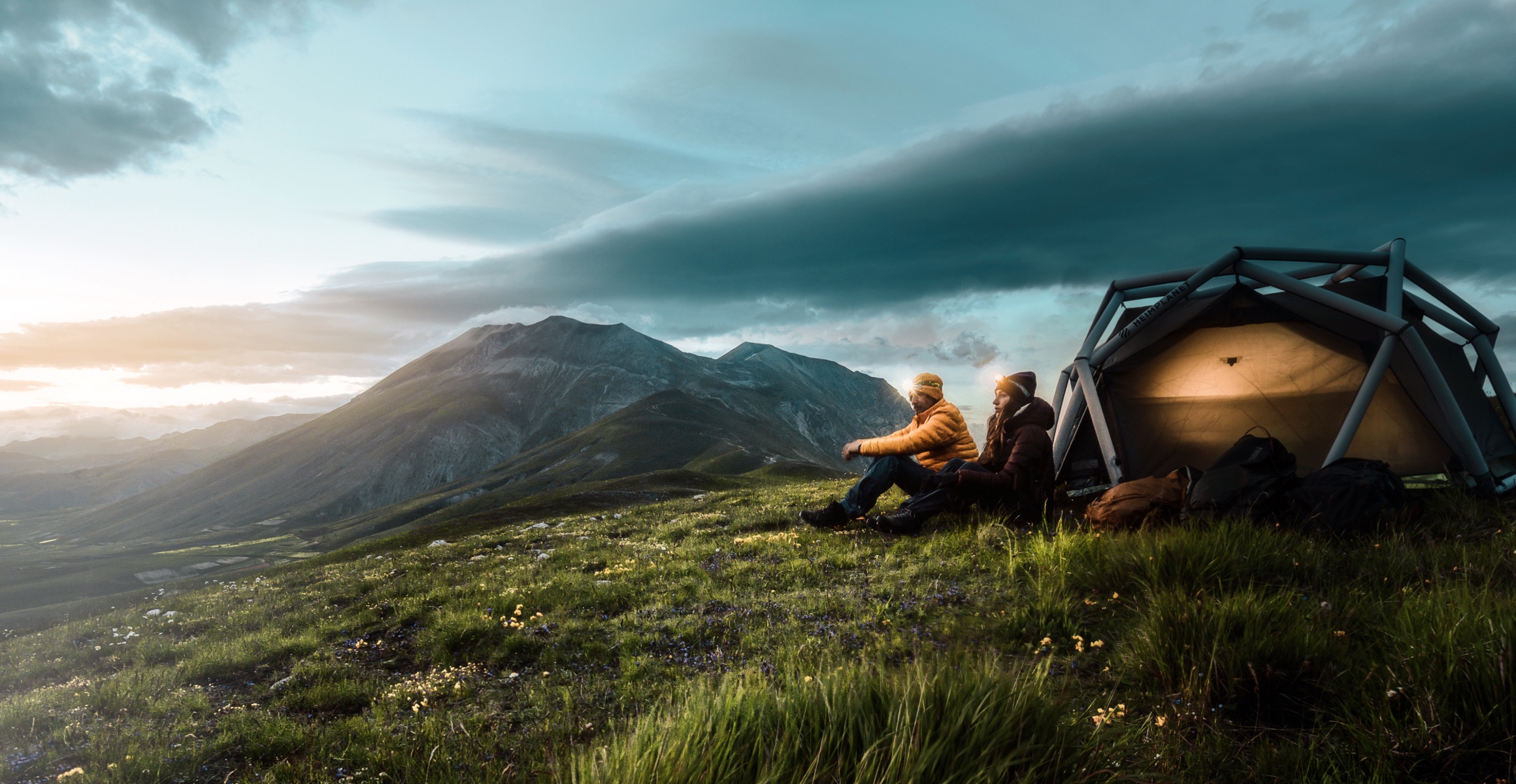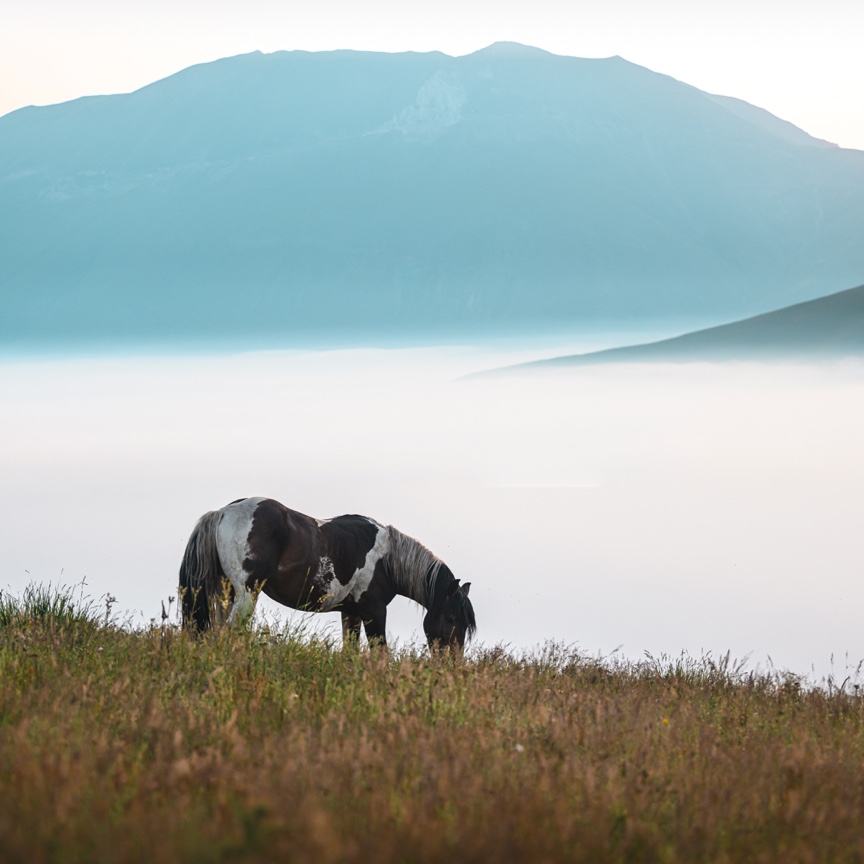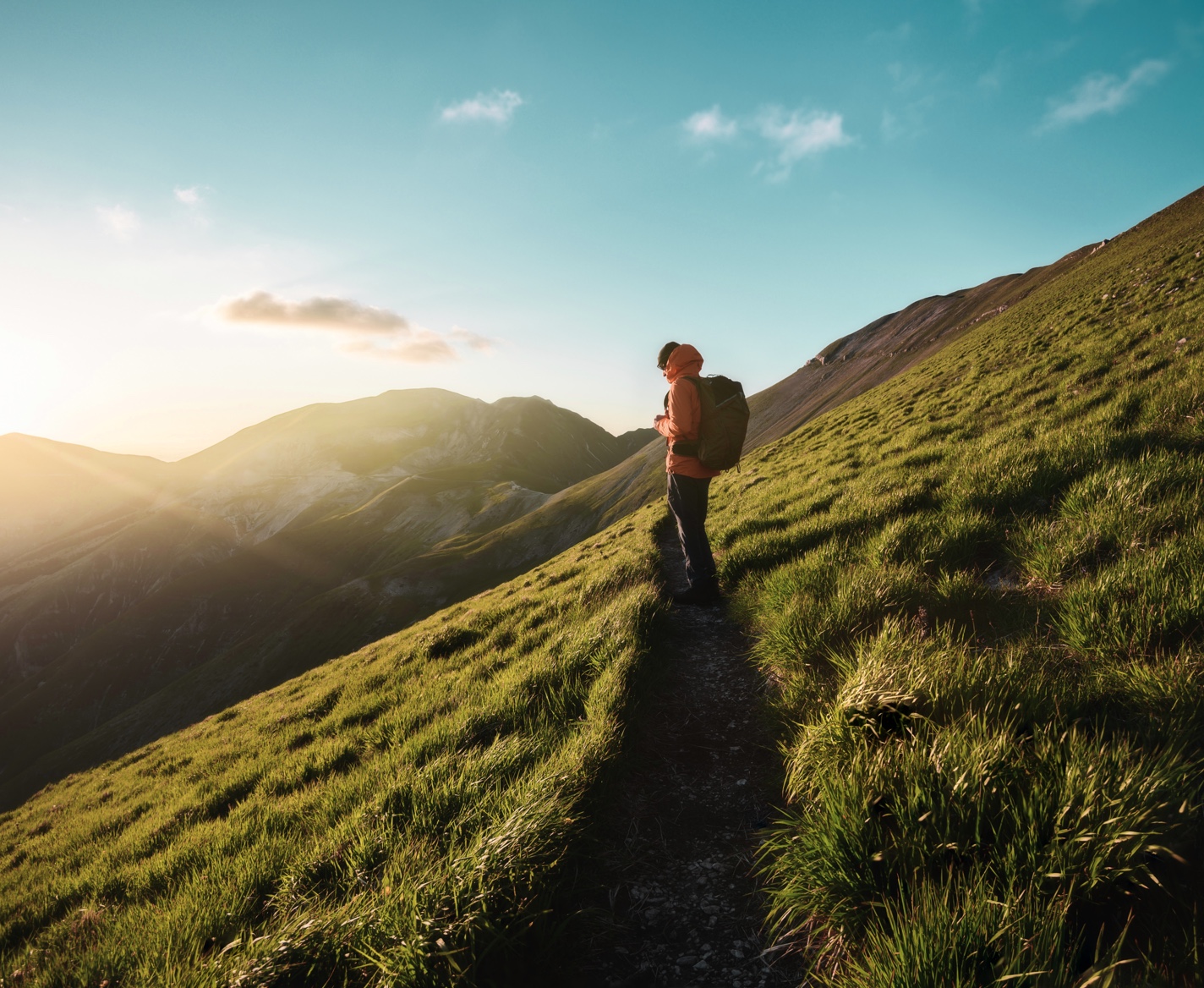Explore local, protect global


A PROJECT TO
FINALLY REDISCOVER
IN A SUSTAINABLE WAY
THE WONDERFUL NATURE
A FEW STEPS AWAY
FROM US.
The forced period of isolation, imposed by the pandemic, has temporarily prevented our journeys. However, it has also heightened our desire to return to the outdoors, to nature, to the mountains. As we slowly return to normality, as far as travel between regions and countries is concerned, we feel that Explore Local, Protect Global is the right message to share. To return to nature and rediscover the beauty of places close to home. To reconnect and appreciate what we have, without needing to undertake long journeys. To rediscover a new dimension of travel, based on respect for the landscape and sustainable choices to protect both people and the environment.

WE DECIDED TO START OUR PROJECT IN THE SIBILLINI MOUNTAINS, A MOUNTAIN RANGE BETWEEN THE MARCHE AND UMBRIA – A LAND OF LEGENDS AND MAGIC IN THE HEART OF CENTRAL ITALY.

The starting point for our adventure is the Forca di Presta, one of the most impressive places in the Umbria-Marche Apennines, at 1,550 m above sea level.
We decide to spend the night here, to enjoy the fantastic sunset with the extraordinary play of lights at dusk that illuminates the Castelluccio Plain and to see the entire chain of the Sibillini Mountains spread out in front of us. It also means we’ll be ready to set out early the following morning, as the sun rises over the Adriatic Sea in the east. This area is in the Monti Sibillini National Park and it’s only possible to bivouac at certain, dedicated sites in order to preserve the landscape and the animals that live here. We find a good spot to set up the tent and enjoy a night under the stars in the middle of this amazing natural arena.



We reach the crest, the Sella delle Ciaule and then descend down to the Lago di Pilato, a place of magicians and necromancers. Local tradition says that the oxen cart carrying the body of Pontius Pilate fell in here. Because of the legend, by the Middle Ages, the lake had become a cursed place and the church banned visiting it, to contain its demonic powers. Today, the glacial lake beneath Monte Vettore is home to a unique fairy shrimp called the Chirocephalus marchesonii. The small red crustacean is endemic here, and is also sadly at risk of extinction due to the severe drought of recent years. It’s sad to see the lake almost dried up and reduced to two small ponds (for this reason it’s also called the Lago con gli occhiali (lake with glasses) – you can really see how climate change is affecting some of the beautiful, but most fragile places on our planet.


We move on from the dry, rugged environment of the Valle del Lago with its rocks and scree to steep, green and flower-covered slopes as we head towards Monte Priora and Pizzo Berro. The valleys facing north-east below us are lush and full of vegetation.
Nowhere is the contrast greater between the harsh, rocky ridges, where the wind never seems to stop, and the lush valleys with their plants, flowers and running water, than in the Infernaccio Gorges that wind through high rocky spires, from Passo Cattivo to Monte Fortino. It’s formed by the Tenna river that flows impetuously in places as torrents between waterfalls and great boulders, and gently, almost silently in others.


The vegetation here is incredibly green, the beech forests draw perfect lines, the soft mosses on tree trunks look like something from a painting. Here, it feels like the world is as it should be, in harmony. Despite the fact that one of the many landslides following the 2016 earthquake blocked the path of the stream and created a small lake, the Infernaccio Gorges, continue to infuse a sense of peace, tranquilly and deep connection with nature – it’s a magical place.
Steep ascents are always tiring, after so many kilometre – the difference in height always makes itself felt – gaining the northernmost part is our goal before we head back. Pizzo Berro with its characteristic summit with sharp blades of rock is the last peak we climb.
From here you have an amazing view of Monte Bove, where you can admire the chamois, the Val di Panico and Monte Priora. Looking back south, we see the entire route we have covered over the past few days. Below us, are the Infernaccio Gorges and above them, Monte Sibilla, the summit from which the whole mountain range takes its name.

LEGEND HAS IT THAT THERE IS AN ENTRANCE TO A FAIRY CAVE ON THE SUMMIT.
It is said that Sibilla was a witch who lived with fairies in a cave on the summit. They would descend from the remote mountain during the night to the valleys to meet the young shepherds and teach the young women the art of spinning wool.
According to ancient legend, if a human being met the fairies, they would become immortal and be taken away from the world of normal living beings and be forced to live in the enchanted realm of Sibilla, as a creature of the night.

As we descend towards Monte Rotondo, the grass is gently caressed by the wind and the setting sun’s intense light makes the landscape even more beautiful. After over 40 kilometres on foot we reach the Fargno refuge happy and satisfied, pick up our e-bikes, turn on the front lights and head back to Castelluccio.
THE FAMOUS PLAINS OF CASTELLUCCIO – IT’S JUNE AND BLOSSOM TIME.
The return journey through the Piano Grande (Great Plain) of Castelluccio is like a painting of a thousand shades as the bands of different colors follow one another like large but delicate brushstrokes on the surface of the earth – it’s simply magnificent.


DAWN FOG IN THE SIBILLINI.
Emerging from the tent, we see the Sibillini Mountains rising from the white mists covering the plain – the look like islands in a sea of fog. There is something ethereal that gives them a mysterious and magical aspect. It is as if the fog washing at the lower slopes of the mountains is caressing them, as we awake.

